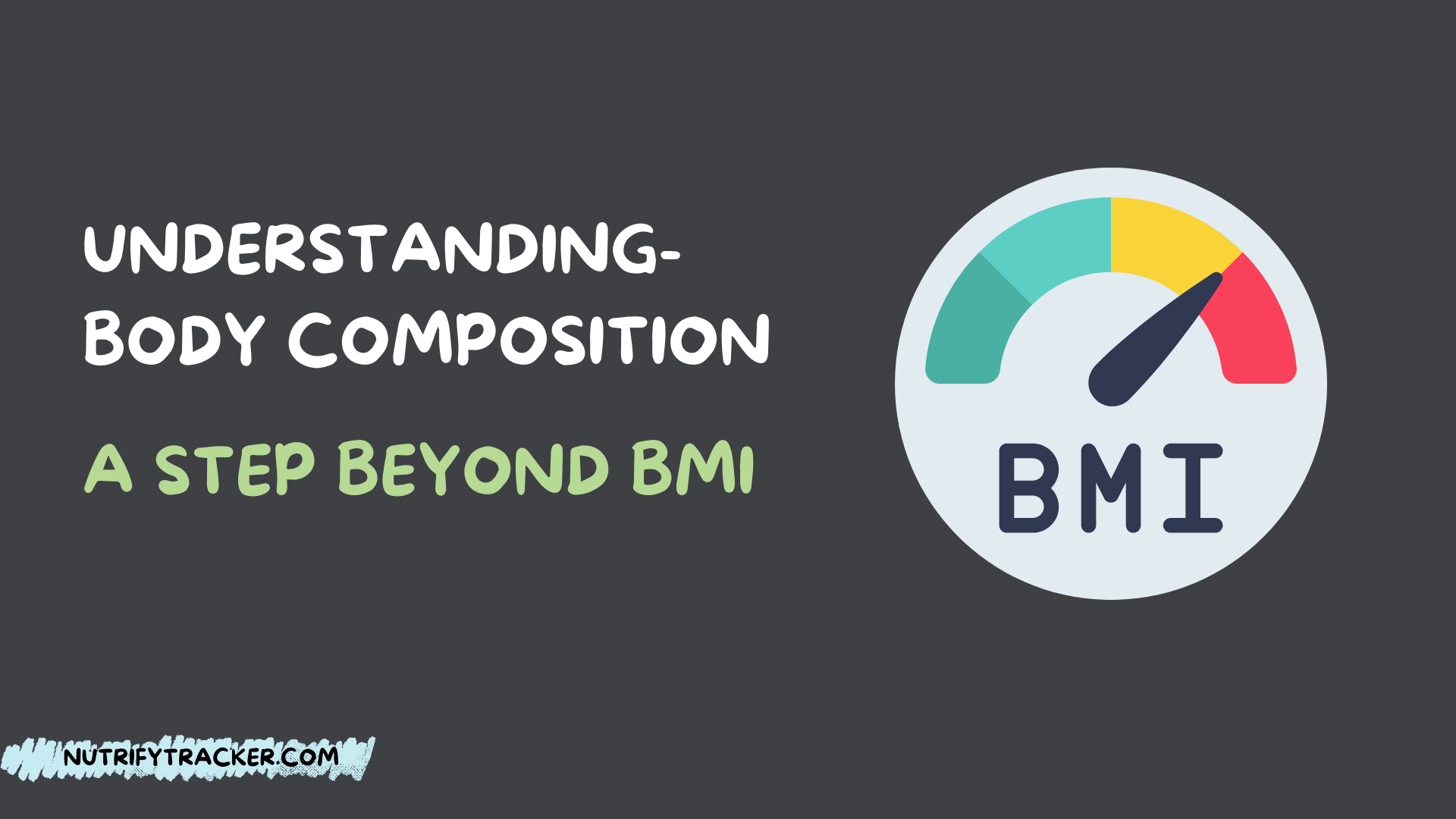Understanding Body Composition: A Step Beyond BMI
By Nutrify Team on Published on 10/4/2024

When it comes to determining fitness and overall health, Body Mass Index (BMI) is one of the commonly used metrics.
However, BMI does not accurately represent the whole story about a person's body composition, as the National Institutes of Health (NIH) remind us.
This article introduces the concept of body composition analysis, a comprehensive approach for making more accurate health assessments.
#Beyond BMI: The Significance of Body Composition Analysis
Body composition analysis provides a detailed breakdown of an individual's weight concerning fat, protein, minerals, and body water.
It takes us beyond the traditional confines of BMI, revealing more pertinent data such as Body Fat Percentage and Skeletal Mass, which are significant to an individual's health status.
#Fathoming Fat: Body Fat Percentage and Visceral Fat Level
Body fat percentage is a vital component of body composition analysis.
It accurately discloses the proportion of a person's weight that is body fat--- that BMI can oversee.
Furthermore, Visceral Fat Level measurements give us critical insights into harmful fat nestled deep within the abdomen area, often leading to several metabolic and cardiovascular diseases.
For a more detailed understanding of body fat and how to calculate it, check out our Body Fat Calculator.
#Unraveling Muscle Mass: Skeletal Muscle Mass
Understanding body composition also requires us to evaluate Skeletal Muscle Mass.
Muscles play a pivotal role in burning calories, maintaining physical strength, and protecting joints— aspects that BMI is unable to illustrate.
#Obesity and BMI: An Incomplete Picture
BMI has been widely used to diagnose obesity.
But, it does not differentiate between fat and muscle, suggesting that simply relying on it may not give us the full picture.
Recognizing this, measuring fat levels with an informed method like Body Composition Analysis emphasizes a more holistic understanding of obesity.
#Body Composition Tests: Going Beyond the Scale
Dexa body composition tests, also known as dual x-ray absorptiometry (DEXA), offer us insights beyond the scale.
These tests are incredibly comprehensive and allow us to identify fat, bone mass, and muscle in each section of the body, proving to be useful in tracking progress over time.
#Understanding Body Composition for Overall Health
Inclusive assessments such as the Visceral Fat Level, Functional Body Composition, and Skeletal Muscle Mass not only complement traditional weight measurements but also provide an in-depth understanding of overall health.
The inclusion of these aspects assists in detecting conditions like overweight, obesity, musculoskeletal disorders, and contributes to meticulous and meaningful BMI and health assessments.
For those looking to manage their weight effectively, understanding your body composition is crucial.
Learn more about creating a calorie deficit in our article on What is Calorie Deficit for Weight Loss.
Our understanding of body composition charts the course toward better health.
BMI provides the baseline. Still, incorporating examinations of body fat percentage, skeletal muscle mass, and other elements contributes to a fuller and more functional understanding of our health.
For more information on how to calculate and understand your body fat percentage, visit our Body Fat Calculator page.
Frequently Asked Questions
Find answers to common questions
Body Composition Analysis is an advanced method of assessing an individuals weight in terms of body fat, protein, minerals, and body water. It provides a thorough understanding of body composition rather than solely relying on body mass index (BMI).
Body Fat Percentage is crucial as it reflects the actual proportion of weight that is body fat. A high percentage of body fat is linked to an increased risk of disease.
Skeletal Muscle Mass contributes significantly to body composition as it plays roles in overall strength, calorie burning, and joint protection.
